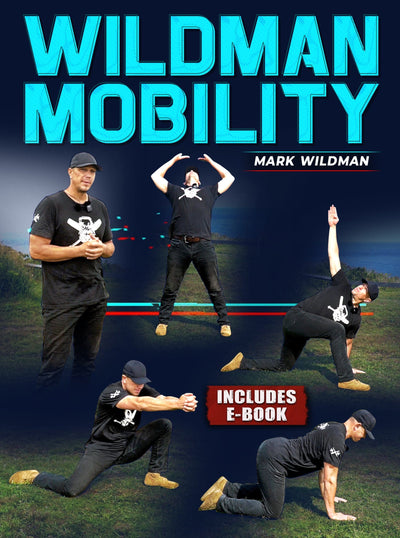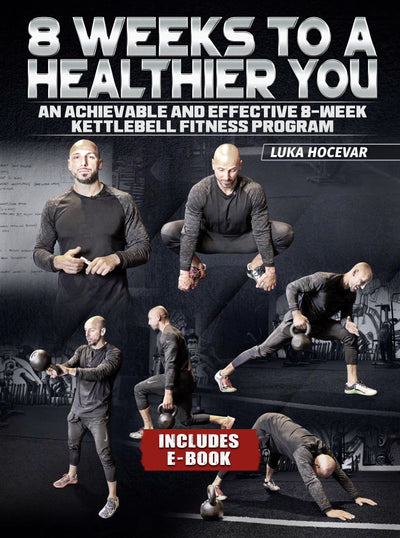A Guide to Using Kettlebells
Kettlebells, originally popularized in Russia, have gained widespread recognition in the fitness world due to their versatility and effectiveness. These compact, cannonball-shaped weights with a handle attached have been used for centuries to build strength, improve flexibility, and enhance cardiovascular fitness. The unique design allows for a wide range of movements and exercises, making kettlebells an excellent tool for a holistic fitness routine.
What this article covers:
- How to Use Kettlebells
- Further Insights into the Benefits of Using Kettlebells
- Additional Kettlebell Exercises
How to Use Kettlebells
So if you are wondering how to use kettlebells we have you covered! To effectively utilize kettlebells, it's crucial to begin by choosing the appropriate weight based on your fitness level and the specific exercise. Beginners should opt for a lighter kettlebell to grasp proper form and technique. Understanding and maintaining proper form is foundational. Familiarize yourself with the correct alignment and movement patterns for each exercise before attempting them. This understanding ensures both effectiveness and injury prevention.
Starting with fundamental movements like the kettlebell swing, deadlift, or goblet squat is essential for building a strong foundation. As you gain confidence and familiarity, progressively increase the weight and complexity of the exercises. This gradual progression is key to continuous improvement and prevents plateauing in your fitness journey.
If you are looking for bodyweight and kettlebell workouts, finding crossfit rx kettlebell weight selection, wondering what's a good kettlebell weight, or how to increase kettlebell weight, we have you covered!
Safety should always be a priority. Focus on maintaining a neutral spine and engaging your core muscles during exercises to protect your lower back. Always listen to your body and never compromise form for heavier weights. Coordinating your breath with your movements is also vital. Exhale during the exertion phase and inhale during the relaxation phase.
Prior to your kettlebell session, engage in a thorough warm-up with dynamic stretches and movements. Afterward, ensure a proper cool down with static stretches to improve flexibility and reduce muscle tension. Circuit training is highly effective with kettlebells. Alternate between different kettlebell exercises with minimal rest to maintain an elevated heart rate and achieve a full-body workout.
If you're new to kettlebell training or uncertain about your form, consider seeking guidance from a certified kettlebell instructor. They can provide personalized advice and ensure you're utilizing kettlebells safely and effectively. Lastly, always pay attention to how your body feels during and after a workout. If you experience anything beyond normal muscle soreness, stop the exercise and consult a healthcare professional. By adhering to these guidelines, you can maximize the benefits of kettlebell training while promoting a safe and productive fitness routine.
Further Insights into the Benefits of Using Kettlebells
Kettlebell workouts offer a myriad of advantages that cater to fitness enthusiasts of all levels. Enhanced flexibility is a notable benefit, resulting from the dynamic movements and wide range of motion involved in kettlebell exercises. This increased flexibility is vital for preventing injuries and improving overall mobility.
A less obvious benefit is the improvement in grip strength. The unique shape and handle of kettlebells necessitate a firm grip for control and movement during exercises. Over time, this leads to strengthened grip, beneficial not only for kettlebell workouts but also for various daily activities and exercises.
The calorie-burning potential of kettlebell workouts contributes to weight loss and calorie burn. High-intensity kettlebell exercises such as swings and snatches engage multiple muscle groups, raising the heart rate and metabolic rate, aiding in weight management and fat loss.
Kettlebell training is more than just physical; it's a mental exercise too. The intricate movements of kettlebell exercises demand mental focus and coordination. Concentration is essential to perform exercises with proper form and technique, fostering a strong mind-body connection.
Additional Kettlebell Exercises
Kettlebell Deadlift is a foundational exercise that strengthens the posterior chain, including the hamstrings, glutes, and lower back. Starting with the kettlebell on the ground, a proper deadlift involves hinging at the hips and maintaining a neutral spine as you stand up, holding the kettlebell.
Kettlebell Clean is a dynamic movement that engages the entire body, focusing on explosiveness and power. Beginning with a hip hinge and a quick extension of the hips and knees, you pull the kettlebell up, "cleaning" it to chest height while keeping your arm close to your body.
Kettlebell Press, executed from the rack position, targets the shoulders, triceps, and core. Press the kettlebell overhead from the shoulder level, fully extending your arm, and then lower it back to the rack position in a controlled manner.
Kettlebell Lunge, while similar to a bodyweight lunge, involves holding a kettlebell close to your chest for added resistance. Stepping forward into a lunge position, keeping the chest upright and the back straight, provides an excellent lower body workout.
Kettlebell exercises offer a well-rounded fitness approach, encompassing physical strength, cardiovascular benefits, flexibility, and mental acuity. Whether you're a beginner or a seasoned athlete, incorporating kettlebell exercises into your regimen can amplify your fitness journey. Always prioritize proper technique and gradually increase the intensity for safe and effective training. Consulting a fitness professional can guide you towards maximizing the benefits of kettlebell workouts.
Did you find the blog helpful? If so, consider checking out other guides:
- Kettlebells Workout for Beginners
- Kettlebell Weight for Beginners
- Kettlebell Workouts for Female Beginners
- Advanced Kettlebell Workout
- A 3-Day-a-Week Kettlebell Workout
- The Power of a Morning Kettlebell Workout
- 12 Week Kettlebell Workout Program
- Full Body Kettlebell Workout Program
- Kettlebell and Barbell Program
- 6-Week Kettlebell Workout Program
- Kettlebell Core Workout
- Upper Body Kettlebell Workout
- Around the World Kettlebell
- Kettlebell Marches for Core
- Kettlebell Tricep Workout





